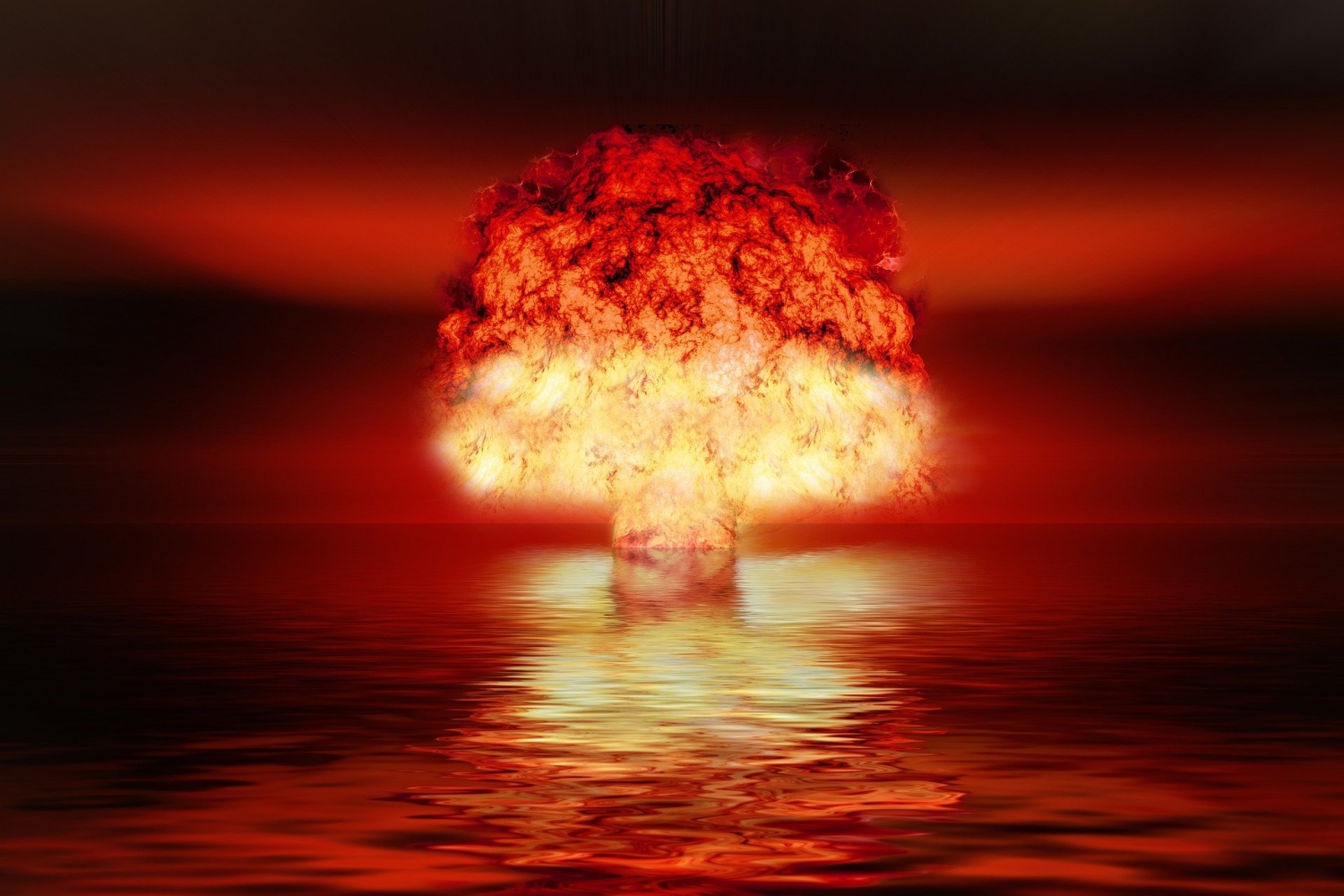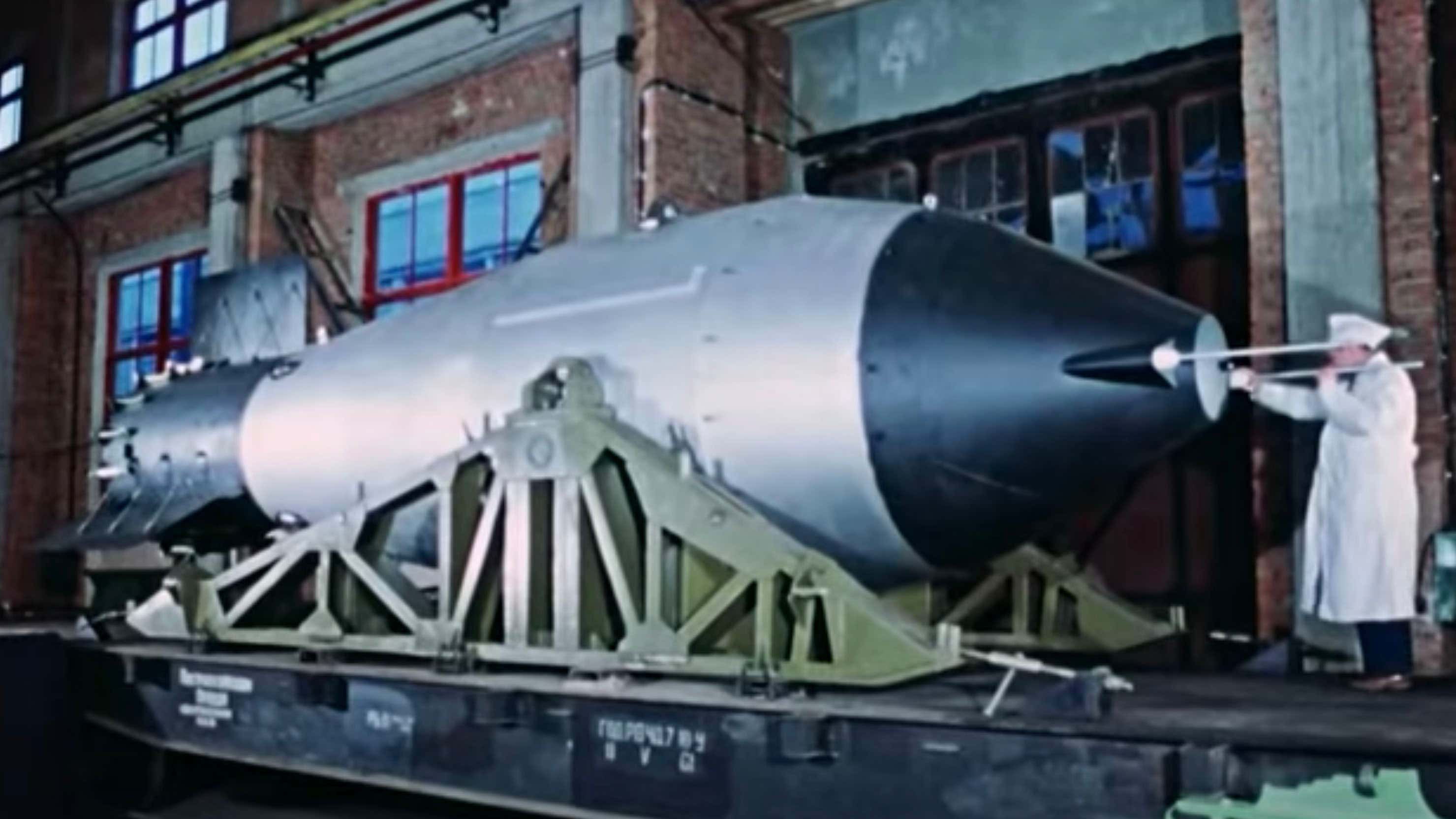Youtube Tsar Bomba - This previously classified film provides a fascinating new look at a Cold War 50-megaton nuclear test that took place nearly six decades ago.
A nuclear bomb named Ivan dropped by the Soviet Union over Novaya Zemlya in the Arctic Ocean in 1961. on October 30, was the largest device of its type ever detonated. The actual weapon had a yield of about 50 megatons—the equivalent of 50 million tons of TNT. For now, the images available for that test are strictly limited, consisting of short, grainy clips and low-quality photos.
Youtube Tsar Bomba

Ivan's giant device was created under the program "izdeliye 202" (which means "product 202", otherwise known as "V"). Years later, when more details became known in the West, the weapon was named the "Caro Bomba".
New Video Shows Largest Hydrogen Bomb Ever Exploded
In 2020 August 20 State Atomic Energy Corporation Rosatom, Russia's state concern responsible for nuclear plants, including nuclear weapons, released a 30-minute documentary on its official YouTube channel showing the test in unprecedented detail, starting with the initial transport. the device itself into a mushroom cloud that then rose about 6.2 miles above the Arctic Archipelago. The film will be released to mark the 75th anniversary of Russia's nuclear industry - although the thermonuclear bomb, often described in the West as a "doomsday weapon", may be an unusual choice for the anniversary. Nevertheless, it was a major technological achievement.
Although the documentary is pure Soviet propaganda, it reveals many interesting details of the trial. After the Top Secret titles, one anachronistic scene shows a fully assembled Ivan bomb being simultaneously moved by a steam train. Its target was Olenia Air Base near Olenegorsk on the Kola Peninsula in northwestern Russia, where the bomb was unloaded and then transported by truck. Interestingly, versions of the four-engine Tu-95 Bear bomber, which carried a destructive payload for a flight over the Barents Sea, are still in service, albeit in a very modern form. A specific plane used in 1961. October month. for testing was the Tu-95V, a special adaptation of the first-generation Bear-A nuclear bomber with an enlarged and reinforced bomb bay for carrying semi-submarine weapons. Like many other strategic bombers of its era, the Tu-95V featured a white anti-nuclear flash scheme, although in this case it was extended to include the propeller blades.
The documentary shows us inside the cockpit of the Tu-95V, where the flight crew drop their goggles before we watch as the 26.5-ton bomb smoothly parachutes towards its intended target, State Test Site No. 6 near the Russian Ministry of Defense - near the Matochkin Strait in Novaya Zemlya. The detonation itself is recorded from various angles, including from the air. For part of the mission, the Tu-95V was accompanied by at least two other aircraft, including a twin-jet Tu-16 bomber, which is a "flying laboratory" equipped with cameras, radio telemetry equipment and oscilloscopes to measure power. explosion and pressure recorders to measure the intensity of the shock wave. Other measuring equipment was installed on the Tu-95V itself, including sensor probes that replaced the usual gun positions. One scene in the documentary shows a model that suggests a total of five aircraft were built, at least at the start of the mission.
The mission itself was controlled from an underground bunker in Belyusha Bay, 162 miles south of the test site. Closer to the detonation site itself was D-8, 56 miles from the test area, which contained more measuring and recording equipment, as well as an underground command room, and warships were used as a communications relay between the two stations. At the state test site no. 6 itself to assess the damage, but it was equipped with additional automated test equipment: cameras and filming equipment and an underground oscilloscope.
Detonating 1 Million Tsar Bombas In The Challenger Deep
The bomb was dropped from a Tu-95V flying at an altitude of 34,449 feet and detonated at 13,123 feet above the ground - an air burst - which would have greatly reduced the radiation emitted, which may have been the reason the documentary referred to the weapon as "pure hydrogen bomb". But of course, everything is relative when it comes to the most powerful nuclear device in the world.
According to the video, the Tu-95V was 28 miles from the launch site and the detonation created a visible fireball 621 miles away, despite cloudy weather. "The explosion was accompanied by a bright burst of unusual force," explains the narrator. Within seconds, the dust plume rose to a height of about 6 miles.
The film then cuts back to the aircraft 155 miles away from the detonation and we see a huge fireball slowly rising and expanding to a maximum diameter of 12 miles. Forty seconds after the explosion, the fireball reached an altitude of about 19 miles, after which a mushroom cloud began to form, with a maximum height of 37 to 40 miles and a diameter of 56 miles.

We see the Tu-95V coming home, the mushroom cloud still visible 497 miles away, and then "hours later" after the explosion, we land on the ground to witness the destruction of Novaya Zemlya. The scientists are seen in the Mi-4 helicopter's specially equipped radiation reconnaissance system, arriving unprotected because "even in the middle of the site [the radiation] was negligible." Then, some team members put on protective gear and walk closer to the center of the test site, and it appears that they are using the GT series tracked vehicle, which is mainly designed for work in snow conditions. Here, for "thousands of kilometers" in all directions, the earth stopped, most of the snow evaporated, and the structures above the surface were destroyed.
Tsar Bomba: The Biggest Nuclear Bomb Ever Detonated
The Soviet Union's path to a 50-megaton test began in 1961. since the first nuclear explosion in the country in October 1949. on August 29 using an experimental device known as RDS-1. This was followed by the first airborne bomb, the 30-kiloton RDS-3 Maria, which was launched in 1951. October 18 dropped by a custom Tu-4 bomber, itself an unlicensed copy of the B-29 Superfort.
Until 1953 the Soviets developed nuclear bombs for larger scale production and could carry the 30 kiloton RDS-4T Tatyana, which could be carried by the Il-28 Beagle jet bomber. That same year, the Soviet Union detonated its first thermonuclear bomb, the RDS-6S Sloyka, in a ground test that took place on August 12.
Ivan was the brainchild of Soviet Premier Nikita Khrushchev and was given permission in 1961. in July during a particularly cold period in East-West relations that culminated in the Berlin Crisis and the permanent division of the city by the Berlin Wall.
With typical bombs, Khrushchev demanded that his engineers develop a thermonuclear weapon with an unprecedented 100-megaton yield, requiring a three-stage warhead instead of the usual two. It seems that the team responsible was concerned about the radiation risks and decided to reduce the result to 50 megatons - which is still the equivalent of approx.
Largest Ever Hydrogen Bomb Blast Shown In Declassified Russian Video
In contrast, the largest nuclear device ever detonated by the United States was the device it launched during the Castle Bravo test at Bikini Atoll in the Marshall Islands in the Pacific Ocean in 1954. March 1 Unlike the Soviet test, this result was achieved. by chance, due to miscalculations by designers. However, the resulting result - 15 megatons, compared to the planned 5-6 megatons - still fell short of Ivan's test. The Castle Bravo device was mounted in a "gun pod" on an artificial island rather than air-dropped, but was later developed into a Mk 21 bomb that could be carried by a US Air Force B-36 Peacemaker or B-47. Bomber. stratojet
Meanwhile, Ivan's detonation was destined to become a high water mark in atmospheric nuclear testing. With growing concern about fallout from ground-based testing, the governments of the Soviet Union, the United Kingdom, and the United States in 1963 signed the Partial Test Ban Treaty. Afterwards, all testing had to be done underground.
Ivan's bomb was ultimately too large for practical military use—delivering and finding targets worth using. However, the Soviet Union continued to be actively involved in the development of free nuclear bombs along with missiles and other delivery systems.

Nuclear weapons continue to be of great importance to the Russian armed forces today, and most Russian warplanes are capable of carrying nuclear bombs. While the details of Russia's free-fall nuclear bombs remain highly classified, equivalent practice bombs show what they look like and are issued to fixed-wing tactical units for use in exercises. The release of this Cold War-era documentary is a chilling reminder of the ever-present presence of these weapons and their devastating destructive power.
Russia Releases Secret Footage Of 1961 'tsar Bomba' Hydrogen Blast
(Photo: Aleksandras Antropov from Pixabay) Tsar Bomba, or Ivan the Great, holds the record for the most powerful man-made explosion.
Nuclear explosions of nuclear power plants and atomic weapons of mass destruction are among the most terrifying events in human history. Unfortunately, the last century has seen a number of huge explosions, the most famous of which is the Tsar Bomba
Tsar bomba mens watch, bride tsar bomba, tsar bomba ground zero, tsar bomba, tsar bomba pictures, tsar bomba test, tsar bomba russia, tsar bomba scale, tsar bomba photos, tsar bomba mushroom cloud, tsar bomba watch price, tsar bomba automatic watch
0 Comments